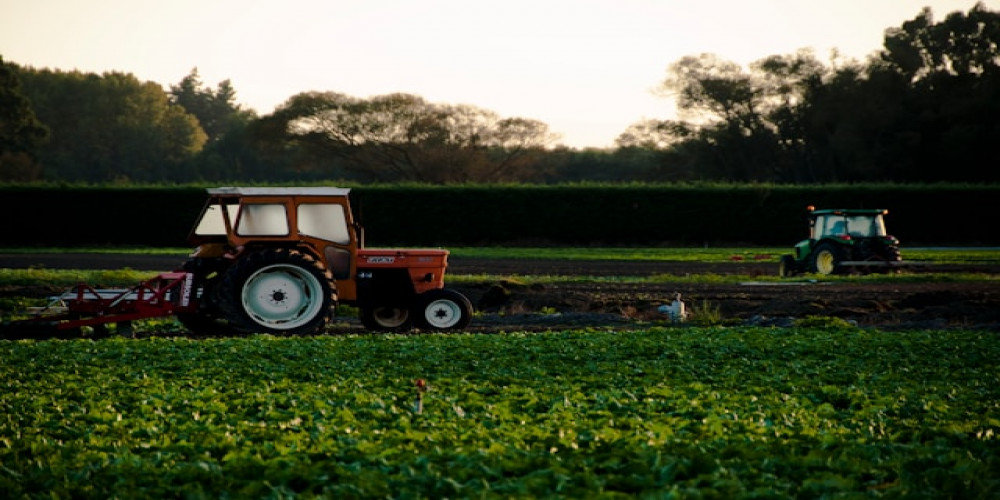 Launch apps instantly. Claim $200 credits on DigitalOcean
Launch apps instantly. Claim $200 credits on DigitalOcean
Unlocking the Potential of Precision Agriculture: A Guide for Modern Farmers
Written by Sarbagya India » Updated on: March 01st, 2024

Precision agriculture has emerged as a game-changer in modern farming, revolutionizing traditional practices by leveraging technology and data-driven insights. By optimizing resource allocation and minimizing input wastage, precision agriculture holds the key to maximizing crop yields while promoting sustainability. In this comprehensive guide, we explore the principles, technologies, and benefits of precision agriculture, empowering modern farmers to harness its full potential.
Understanding Precision Agriculture:
Precision agriculture, also known as precision farming, is a holistic approach to farming that utilizes technology to monitor, analyze, and manage agricultural practices with precision. At its core, precision agriculture aims to tailor inputs such as water, fertilizers, and pesticides to the specific needs of crops, optimizing resource efficiency and minimizing environmental impact. By integrating data analytics, GPS technology, and remote sensing, precision agriculture enables farmers to make informed decisions at every stage of the farming process, from planting to harvest. Join sarbagya for more knowledge
Key Components of Precision Agriculture:
a. Global Positioning System (GPS):
GPS technology plays a crucial role in precision agriculture by providing accurate location data for field mapping, equipment guidance, and monitoring. GPS-enabled devices such as tractors, drones, and soil sensors allow farmers to precisely navigate their fields and target specific areas for intervention.
b. Remote Sensing:
Remote sensing technologies, including satellite imagery and aerial drones, provide valuable insights into crop health, soil moisture levels, and pest infestations. By capturing high-resolution images of fields, farmers can identify potential issues early and take proactive measures to address them, minimizing yield losses and maximizing productivity.
c. Data Analytics:
Data analytics tools analyze vast amounts of agricultural data, including yield maps, weather patterns, and soil nutrient levels, to generate actionable insights for farmers. By identifying trends, patterns, and correlations in data, farmers can optimize inputs, adjust planting strategies, and improve overall farm management practices.
Benefits of Precision Agriculture:
a. Increased Productivity:
Precision agriculture enables farmers to optimize inputs and maximize crop yields, leading to increased productivity and profitability. By precisely applying fertilizers, water, and other inputs, farmers can ensure that crops receive the right amount of nutrients and resources, enhancing growth and development.
b. Resource Efficiency:
By minimizing input wastage and reducing environmental impact, precision agriculture promotes resource efficiency and sustainability. By targeting inputs to areas of need and avoiding over-application, farmers can conserve resources such as water and fertilizers, reducing costs and minimizing environmental pollution.
c. Enhanced Sustainability:
Precision agriculture supports sustainable farming practices by promoting soil health, biodiversity, and ecosystem resilience. By minimizing soil erosion, reducing chemical runoff, and preserving natural habitats, farmers can protect the environment and maintain the long-term viability of their farms.
d. Improved Decision-Making:
By harnessing data-driven insights and real-time information, precision agriculture empowers farmers to make informed decisions and respond promptly to changing conditions. Whether adjusting irrigation schedules, implementing pest management strategies, or optimizing planting densities, farmers can optimize farm operations for maximum efficiency and effectiveness.
Implementing Precision Agriculture on the Farm:
a. Assessing Farm Needs:
Before implementing precision agriculture technologies, farmers should assess their farm's specific needs, goals, and constraints. By identifying key areas for improvement and setting clear objectives, farmers can tailor precision agriculture solutions to their unique circumstances.
b. Investing in Technology:
Precision agriculture technologies require initial investments in hardware, software, and training. Farmers should carefully evaluate available options and choose technologies that align with their farm's scale, crops, and budget. While some technologies may require significant upfront costs, the long-term benefits in terms of increased productivity and sustainability justify the investment.
c. Training and Education:
Successful adoption of precision agriculture requires training and education for farmers and farm workers. Training programs and workshops can familiarize users with new technologies, software platforms, and best practices for implementation. By investing in training and continuous learning, farmers can maximize the benefits of precision agriculture and stay ahead of the curve.
d. Monitoring and Evaluation:
Continuous monitoring and evaluation are essential for assessing the effectiveness of precision agriculture practices and identifying areas for improvement. By collecting data, analyzing performance metrics, and soliciting feedback from farm workers, farmers can refine their strategies and optimize farm operations over time.
Case Studies: Success Stories in Precision Agriculture:
a. Case Study
1: Smart Irrigation Systems - A farmer in California implements a smart irrigation system equipped with soil moisture sensors and weather forecasting algorithms to optimize water usage in his vineyard. By precisely timing irrigation events and avoiding water stress, the farmer increases grape yields while conserving water resources.
b. Case Study
2: Variable Rate Fertilization - A corn farmer in the Midwest adopts variable rate fertilization technology to tailor nutrient applications to different soil zones within his fields. By adjusting fertilizer rates based on soil test results and yield potential maps, the farmer achieves more uniform crop growth and reduces fertilizer costs.
c. Case Study
3: Drone-Based Crop Monitoring - A soybean farmer in Brazil utilizes drone-based crop monitoring to detect early signs of pest infestations and nutrient deficiencies in his fields. By conducting regular aerial surveys and analyzing multispectral imagery, the farmer identifies problem areas and takes timely corrective actions, minimizing yield losses and maximizing profitability.
Conclusion:
Precision agriculture holds tremendous promise for modern farmers seeking to optimize productivity, enhance sustainability, and adapt to changing environmental conditions. By harnessing the power of technology, data, and innovation, farmers can unlock the full potential of precision agriculture and usher in a new era of farming efficiency and resilience. As the agricultural industry continues to evolve, precision agriculture will play an increasingly vital role in feeding a growing global population while safeguarding the planet for future generations.
Copyright © 2024 IndiBlogHub.com Hosted on Digital Ocean








Post a Comment
To leave a comment, please Login or Register